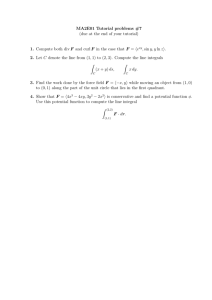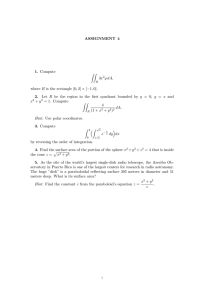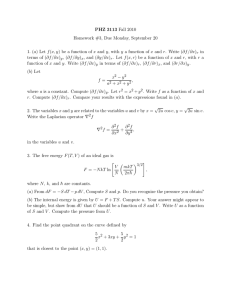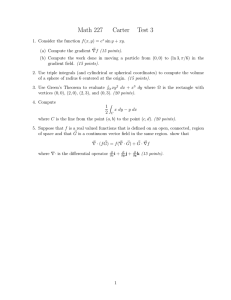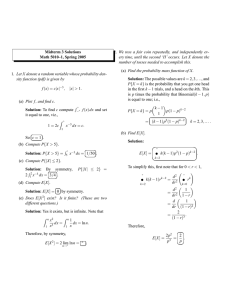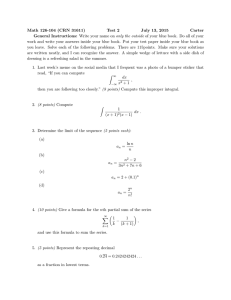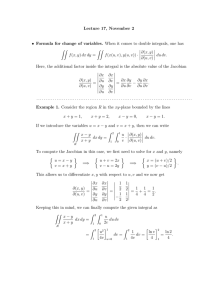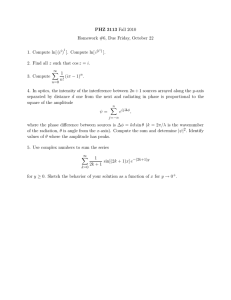15.8 - General Change of Coordinates, eyepatch example
advertisement
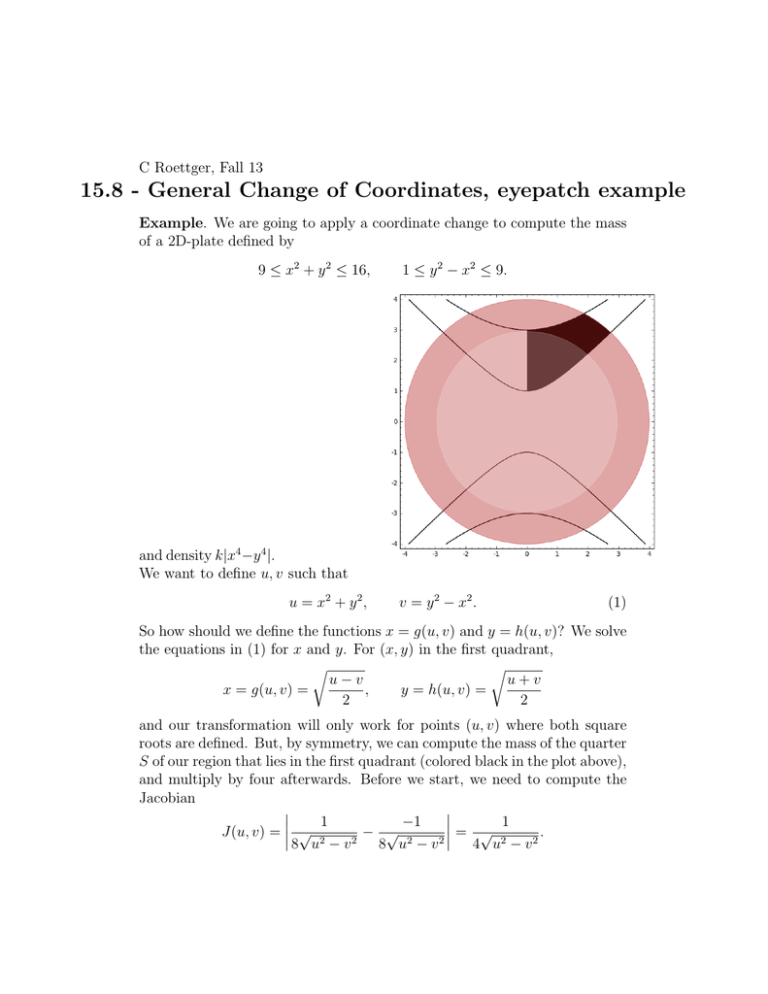
C Roettger, Fall 13 15.8 - General Change of Coordinates, eyepatch example Example. We are going to apply a coordinate change to compute the mass of a 2D-plate defined by 9 ≤ x2 + y 2 ≤ 16, 1 ≤ y 2 − x2 ≤ 9. and density k|x4 −y 4 |. We want to define u, v such that u = x2 + y 2 , v = y 2 − x2 . (1) So how should we define the functions x = g(u, v) and y = h(u, v)? We solve the equations in (1) for x and y. For (x, y) in the first quadrant, r r u−v u+v x = g(u, v) = , y = h(u, v) = 2 2 and our transformation will only work for points (u, v) where both square roots are defined. But, by symmetry, we can compute the mass of the quarter S of our region that lies in the first quadrant (colored black in the plot above), and multiply by four afterwards. Before we start, we need to compute the Jacobian 1 −1 = √ 1 J(u, v) = √ − √ . 8 u2 − v 2 8 u2 − v 2 4 u2 − v 2 We also need to compute our limits for u, v. They are easy! 9 ≤ u ≤ 16 and 1 ≤ v ≤ 9, and R is a rectangle. This already ensures u ≥ v, so g(u, v) is defined on R. The mass of the lamina is then ZZ ZZ uv 4 4 √ dv du m = 4k |x − y | dx dy = 4k 2 2 R 4 u −v S Z 9 16 v (u2 − v 2 )1/2 9 dv = k Z1 9 v((162 − v 2 )1/2 − (92 − v 2 )1/2 ) dv = k 1 9 k = − (256 − v 2 )3/2 − (81 − v 2 )3/2 1 3 k = (2553/2 − 803/2 − 1753/2 ). 3 Now that you have made it through this long computation, you should look again at the picture:
